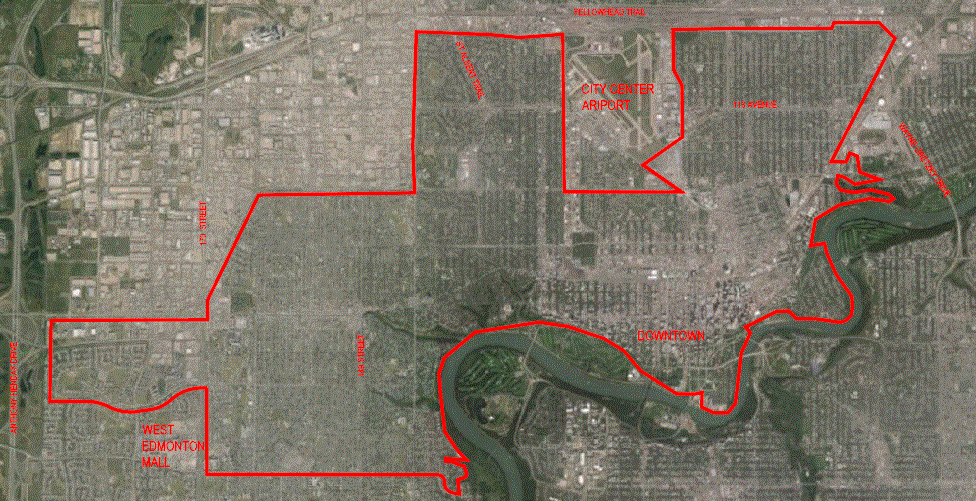
The City of Edmonton has a unique history of growth. It is one of the oldest cities in the Province of Alberta, it’s growth involved both increases in population at the original core and, from the amalgamation of many satellite communities. The City has also been innovative in adopting new engineering and construction standards in an effort to better service the growing population. In 2014, City Council approved a major initiative to evaluate the drainage system of the entire City in an effort to identify necessary infrastructure upgrades such that all areas of the City would have adequate drainage and flood protection. The scope of the study included both the analysis of the major (street and overland) drainage system, and the minor (underground piping) system in a hydraulically coupled fashion. This initiative is pro-active and requires an “out of the box” approach to system analysis and solution development.
Sameng was retained by the City in 2014 to undertake the study of the Phase I area. This area includes the oldest part of the City. It spans over 43 neighbourhoods and involves both separated (storm and sanitary) and combined drainage systems. The Phase I study is thought to be the most complex of the five study areas and was used to establish the analysis methodology for all future phases.
The Sameng team has completed the Phase I work with the following major achievements:
- The computer model representing the study area comprised of over 25,000 pipe segments and close to 10,000 surface drainage segments. Sameng constructed these major components of the project model using Mike Urban, tested the individual components for reliability and accuracy, and assembled an integrated overall study area model.
- The project team accurately characterised the major and minor system interactions and therefore the drainage system deficiencies. This allowed the quantification of both street and pipe related flood risks (from storm and sanitary sources).
- Upgrade options have been developed that include: new trunk sewers at strategic locations to increase the overall capacity of the pipe network, storm pond retrofits in established neighbourhoods to improve their level of flood protection, overland flow improvements, various methods to improve the water quality, partial separation of the storm drains in the combined sewer areas, and locations for new storm outfalls.
In 2015, as the Phase I study was wrapping up, Sameng was awarded Phase IIC of the City Wide project. As the scope of work was similar to Phase I, a similar method of analysis was utilized for the Phase IIC area. Phase IIC mainly covers the central part of the city south of the river, as well as the Callingwood area on the west side of the river. The study area covers 67 neighbourhoods, of which approximately one third is serviced by a combined sewer system. Phase IIC also has a large number of outfalls in comparison to the first study area.
Improvement concepts for Phase IIC have been developed and consist of: large diameter storm tunnels and partial sewer separation in the combined sewer areas, local storm sewer improvements at local depressions, storm pond retrofits in established neighbourhoods, and overland drainage improvements.